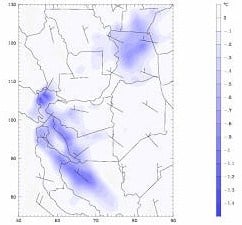Services


Altostratus Inc. has successfully and cost-effectively completed numerous projects for federal, state, local, and other agencies consistently ahead of schedule and on or under budget. Altostratus Inc. also has a record of successful completion of projects that advance the consideration of scientific concepts, RD&D products, and control measures in the research and regulatory environments.
Scroll down through this page for a description of services -- also see Dr. Haider Taha's experience in the page "About Us".
Altostratus' work and various projects in meteorological, emissions, and photochemical modeling led to the consideration by and support from US EPA, AQMDs, cities, and local governments of the “Cool Cities” family of measures to reduce urban heat, improve air quality, and reduce cooling energy use. Altostratus has completed projects to quantify the benefits of surface modification measures (e.g., cool roofs, cool pavements, solar PV, vehicles electrification, and urban forests, among others) some of which were considered in clean-air plans, such the Bay Area and South Coast AQMDs. Altostratus also completed a regulatory atmospheric modeling project to develop an urban-forest control measure for the ozone State Implementation Plan of the Sacramento region. It also completed a project for the Cal/EPA in which it developed a first-of-its-kind Urban Heat Island Index for the state of California and a project for Caltrans / Sacramento Metropolitan Air Quality Management District that developed a heat-mitigation plan for the Greater Capital region. See the projects page for more information or contact us for details.
Computational resources at Altostratus Inc. include multi-processor, high-performance Linux platforms fully dedicated to atmospheric modeling, research, and analysis. Models are continuously maintained, updated, and optimized for various applications. Software needed in data processing, visualization, and statistical analysis are fully configured. Most recent meteorological and surface input datasets are tested, enhanced, and improved , and new data frequently acquired for more accurate modeling at various scales.
| |

